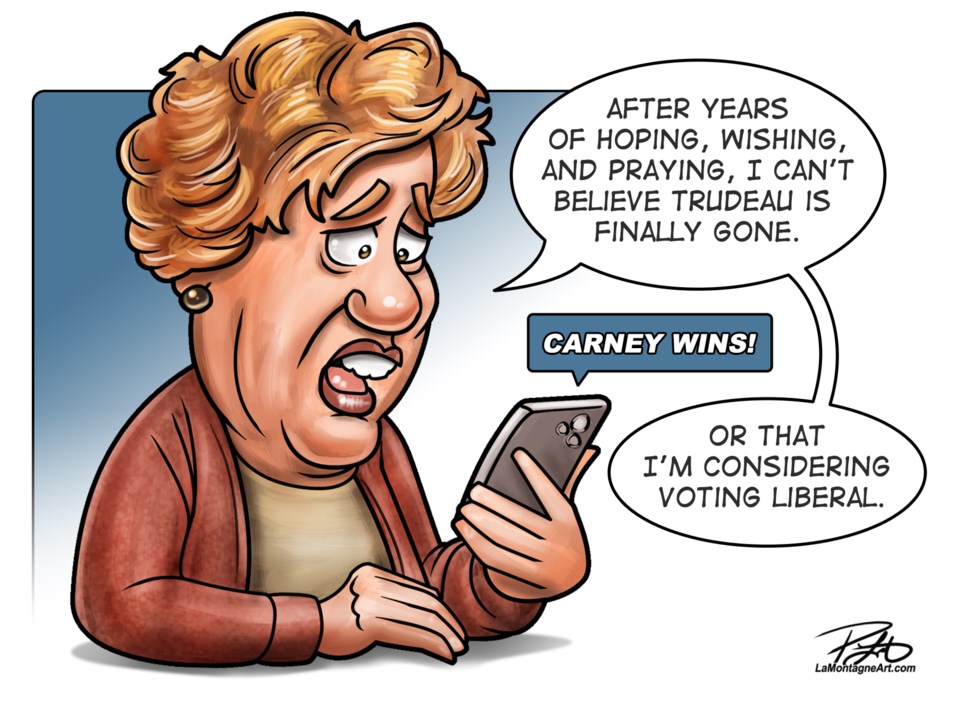Canada’s federal political future became slightly less murky.
With Mark Carney becoming the new Liberal leader and Prime Minister-designate, it could only be a matter of time until an early federal election is called ahead of the planned October date.
Until then, the non-stop dumpster fire that is the tariff trade war led by U.S. President Donald Trump will likely continue to be the main concern in Canada for politicians and voters.
The election talks since the Liberals attained a minority government in 2021 have led to some exhaustion from coast to coast. The deteriorating Canadian-U.S. relationship has seemingly rejuvenated life back into political discourse on future leadership in Canada and who’s best suited to deal with four years of a Trump government.
With few minority governments in any parliamentary-based country making it an entire term, the risk of a snap election has haunted much of the country for several years.
While the Pierre Poilievre-led Conservatives have led in polls since 2021, an Ipsos poll in late February had the Liberals ahead of Poilievre for the first time in four years.
The same poll – which had a sample of 1,000 Canadians – showed 86 per cent agreeing an election was needed to give the federal government a new mandate to address tariff concerns from the U.S.
The well-regarded 338Canada website projected a narrow Conservative minority government as of March 9. A March 11 Nanos poll had the Conservatives holding a one point lead over the Liberals at 36 to 35 per cent, with the NDP a distant third at 15 per cent.
Much of the change has been a new – but familiar – face on the scene for the Liberals. Mark Carney was selected in a landslide – capturing 86 per cent of the vote – to win federal Liberal leadership.
On Monday, Carney met with Prime Minister Justin Trudeau as the shifting of power started until the official swearing-in takes place.
Once he’s officially Prime Minister, some political experts are saying it would be short order until an early federal election is called.
At the time of Trudeau announcing stepping down as party leader and eventual end as Prime Minister, the federal Liberals were in open revolt. Several key ministers announced they were stepping back or wouldn’t be running again, while others openly called for his resignation.
It left a political minefield and an uncertain future as a growing number of Canadians lost faith in his leadership.
With everyone having a best before date, Trudeau had surpassed his with plummeting popularity.
Of the 343 federal electoral districts, the Conservatives had confirmed as of Sunday (March 9) it had 258 nominated candidates compared to 165 for the Liberals. With more political certainty and an election happening before October, those numbers are likely to surge upward in the coming weeks.
For the Bow Valley, the new Yellowhead federal riding of about 115,000 people will get its first day in the sun when an election takes place. No longer will Banff and Canmore be lumped together with the larger and Conservative-leaning communities of Cochrane and Airdrie.
The new riding comprises Banff and Canmore, but also Jasper and other tourism-based communities such as Sundre, multiple summer villages, Improvement District No. 9 Banff National Park, Kananaskis Improvement District and the MD of Bighorn.
Though sprawling, it could reflect the more centre-left leaning politics of the Bow Valley after the Banff-Airdrie riding has been a Conservative stronghold with MP Blake Richards never receiving less than 57 per cent of the vote in five terms.
If U.S. tariffs move forward, the high cost of housing and living in the valley will only increase exponentially items such as building supplies and groceries will rise. Growing costs could also see fewer American tourists travelling to the region, potentially further impacting local businesses that thrive from the international visitation.
The coming years show a level of uncertainty is ahead, but what’s clear is with a new Liberal leader in place and a soon-to-be new Prime Minister, the clock is ticking on when the next federal election will happen.



